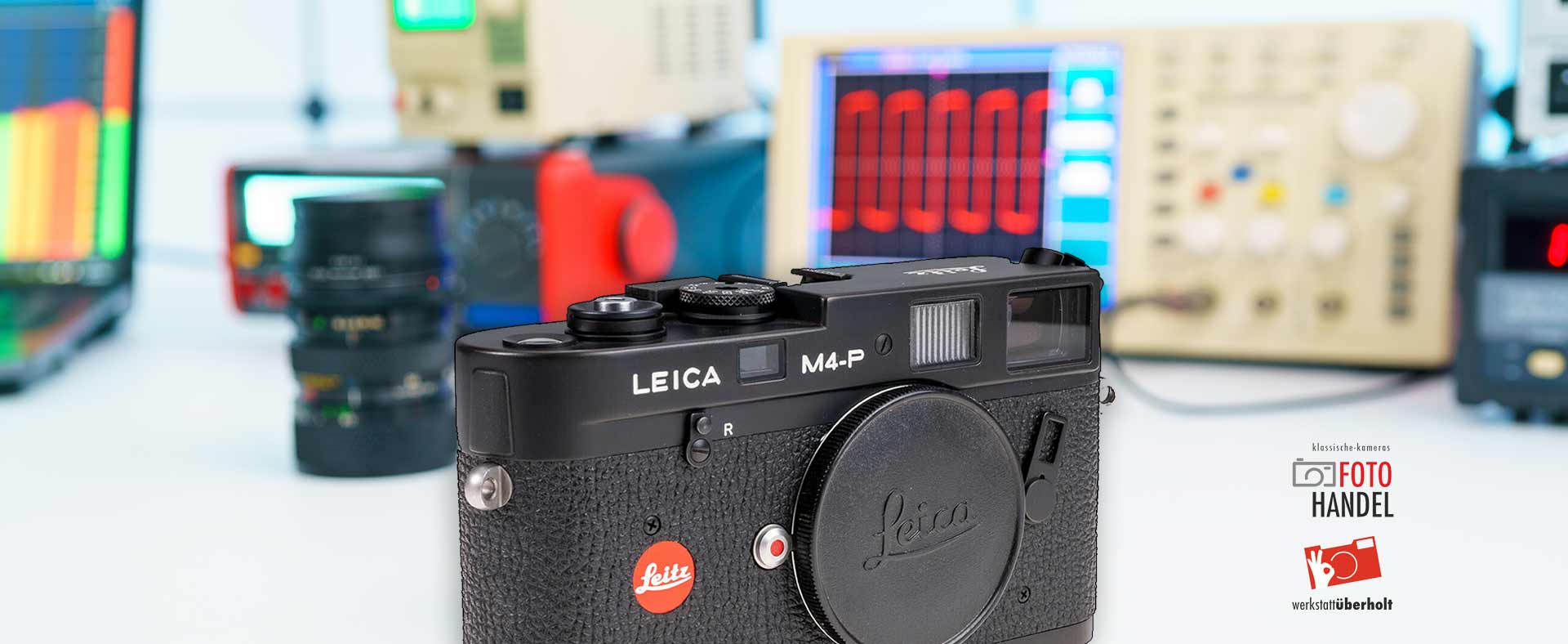
Camera repair, customer service and workshop service
Customer quote:
"It's still working."
This opinion still holds true for most first-time camera owners today, even if it is usually not (anymore) applicable)
What you need to know as a buyer of classic cameras:
Our purchasing experience shows that around 80% of all old cameras any defect and are thus impaired in their function - sometimes more, mostly less.
Camera repair, customer service and workshop service
Nevertheless, one cannot assume that a decades-old camera will work“ like it did on the first day ”. Especially found in the attic or cameras and lenses buried deep in cupboards for many years are usually in a very good optical condition, but technically damaged. It is not the wear and tear that afflicts these cameras, but rather the "untouchedness" over years and decades in which lubricants harden and the precision mechanics "stick".
A camera that has not been used for 15 years is not a quality feature!
As dealers we have a special care and responsibility when selling old ones used cameras, which is reflected not least in the 12-month warranty obligation towards the buyer. This is one of the reasons why we as dealers consider and evaluate a camera offered for purchase more critically and realistically. A 100% functionality is mandatory for the purchase, this applies to all functions, shutter speeds, exposure meters, aperture functionality, etc. Due to the age of the cameras, tolerances are normal and acceptable, but if there are significant abnormalities and deviations in the function from the norm, we must have one Rate the camera as “defective” or “in need of repair” and buy it accordingly.
Many of our customers want to keep their classic cameras for themselves, continue to take photos with them, while others want to carry on a photographic legacy. That is why many analogue photographers are interested in maintaining the functionality and value of their camera equipment.
Revision of a camera
Typical abnormalities:
Batteries, battery availability and battery conversion
The first thing you see is the battery compartment. Batteries forgotten there eventually leak, the battery acid destroys the contacts, corrosion damage sometimes eats through the battery contacts to the inside of the camera.
Many cameras and exposure meters used to use PX 625 / 1.35V batteries, which contained mercury and are no longer available for environmental reasons. Alternatively, the current, mercury-free 1.5V batteries V625U can be used. The otherwise available 1.3 V zinc/air batteries do not work, they have a rapid voltage drop and this results in unreliable exposure measurements. Most cameras with an exposure meter with a moving-coil instrument display up to 3 light values too much when using batteries with too high a voltage (1.5V instead of 1.35V).
Cameras or exposure meters can be readjusted to the 1.5V battery so that the 1.5V batteries do not lead to incorrect exposures. This affects e.g. the Leica M5, Leica CL, Rollei 35, Leicaflex, Minox and many other cameras and also exposure meters such as the LeicaMeter MR, which use this type of battery, which was widespread at the time.
Typical abnormalities:
Batteries, battery availability and battery conversion
The first thing you see is the battery compartment. Batteries forgotten there eventually leak, the battery acid destroys the contacts, corrosion damage sometimes eats through the battery contacts to the inside of the camera.
Many cameras and exposure meters used to use PX 625 / 1.35V batteries, which contained mercury and are no longer available for environmental reasons. Alternatively, the current, mercury-free 1.5V batteries V625U can be used. The otherwise available 1.3 V zinc/air batteries do not work, they have a rapid voltage drop and this results in unreliable exposure measurements. Most cameras with an exposure meter with a moving-coil instrument display up to 3 light values too much when using batteries with too high a voltage (1.5V instead of 1.35V).
Cameras or exposure meters can be readjusted to the 1.5V battery so that the 1.5V batteries do not lead to incorrect exposures. This affects e.g. the Leica M5, Leica CL, Rollei 35, Leicaflex, Minox and many other cameras and also exposure meters such as the LeicaMeter MR, which use this type of battery, which was widespread at the time.
Light seals
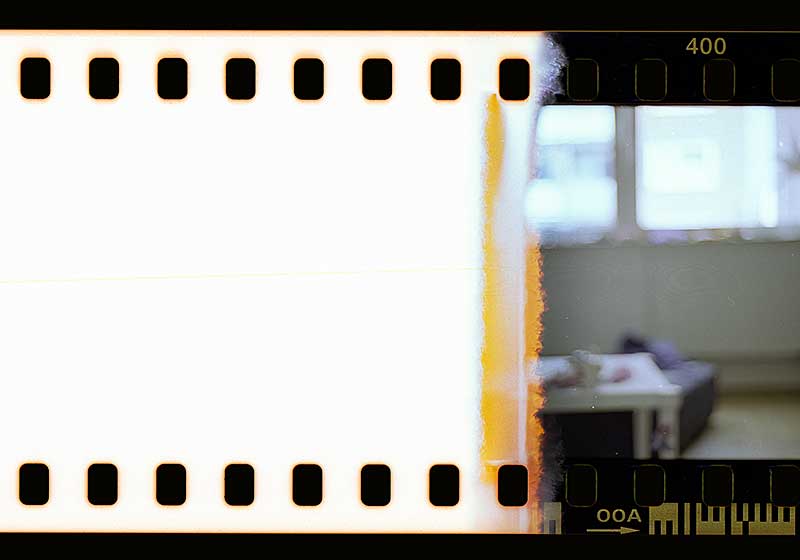
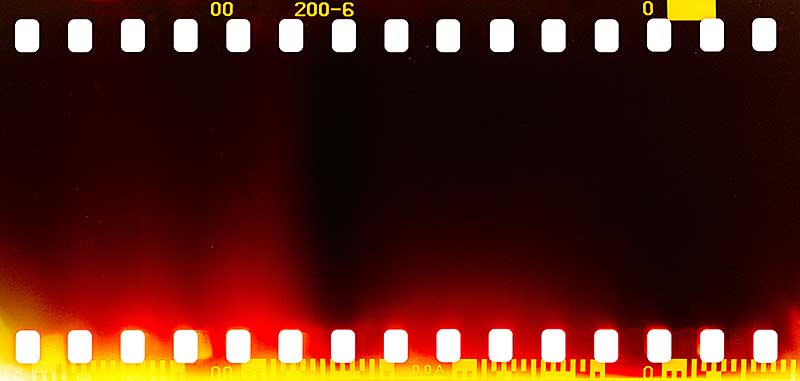
On most cameras, the light seals and mirror stop (on SLR cameras) are made of foam (“foam rubber”), which degrades over time and needs to be replaced. The sticky material contaminates the whole camera and leaves a sticky "goo". The missing material leads to the incidence of light. Light seals are a common anomaly on old cameras. With Hasselblad magazines, the light seal is always replaced as part of an overhaul (CLA).
Leather covering
A brittle "leather covering" starts to crumble, the vulcanite breaks out more and more. For Leica cameras such as the Leica M3 from the 1950s, replacement leather covers are still available from the manufacturer Leica, but only as part of a repair order from Leica. That's why we now create custom-fit replacement leather covers for classic Leica Ms ourselves. Our cuts based on the Japan Hobby Tool synthetic leather 4008 material for Leica cameras are available for Leica M2, M3, M4 and Leica M5. The decorative 0.7mm thick synthetic leather - Made in Japan - resembles the original materials in look and feel. We cut the material with a 125W CO2 laser camera-specifically. We only offer camera leather coverings as part of a workshop overhaul, we do not sell them individually.

Shutter Speeds and Apertures
"The camera still works" is a misconception with many old cameras. A camera not only has to trigger, but the shutter speeds have to be right, at least within certain tolerances. The 1/60th of a second must actually reach this time at least approximately and the "reference time" of 1s is an important OK or KO criterion for used cameras, also for the other times.
Often the shutters or apertures (with central shutters) are initially sluggish and then "break in", but this is the sign of long storage and already resinified apertures and shutters.
80% of Hasselblad Carl Zeiss lenses, that we buy today have (appropriate for their age) a defective central locking system, in which the locking times do not run within the tolerances, and are subject to a technical inspection from us before they are resold. That's why I often wonder how other dealers deal with different shutter speeds, because I rarely see workshop-refurbished optics in their range. Correct shutter speeds are an essential quality feature of a camera or a lens with a central shutter, especially in a performance class like that of Hasselblad.
Oils and greases, lubricants
The lubrication in old cameras and lenses is often no longer available. With lenses, the focusing or the zoom ring is then very easy to move and there is no longer any resistance.
The "reverse" abnormality is solidified oils, which often make focusing difficult.
A common one A defect in lenses is an oily aperture. Here, oil collects on the aperture lamellae, which should actually be between the lamellae for lubrication. Sometimes the aperture is therefore sluggish or even fixed. If you press the pin on the back of the lens bayonet (on lenses with a “jumping aperture”) when setting a small aperture, the aperture should open very easily without delay (and close again quickly).
A typical camera problem is the "asthma" of the Canon A-1/Canon AE-1, the camera groaning when the shutter is released. Here the Canon lacks the lubrication that has been lost after many years.
In its 1972 user manual, Hasselblad recommends servicing a camera every six months or after every 5000 exposures. A recommendation that was probably only rarely taken up.
Electronics
Anyone who wants to buy solid second-hand goods from the analog era relies on mechanics and distrusts electronics.
Electronic faults and defects can no longer be repaired in most cases, or are difficult and expensive to repair. Many Leica R4 models today have major electronics problems, Canon T90 cameras are unusable if the backup battery is empty. Almost all Leica CL cameras are defective these days, there have always been electronic problems with these cameras.
However, there are no rules without exceptions :-)
Some of the typical electronic errors ( Display errors, flex strip breakage, circuit board) of electronic analogue cameras can be repaired by us as a workshop service.
Leica Minilux, Leica CM Contax T2 and Contax T3 Contax G1 and Contax G2 Ricoh GR1 Yashica T4, Yashica T5 Nikon 35Ti Hasselblad XPAN
Film editing and transport
With 35 mm cameras, the correct film transport (film editing) is rarely conspicuous. With medium format cameras, image overlaps are more common due to faulty film transport. The individual images are then not correctly separated by a bar between the individual images and partially overlap.
Palpas coating (on Hasselblad cameras)
To absorb light in the mirror area and avoid reflections (stray light) inside a Hasselblad camera body, a thin palpas coating is applied to the side areas on a sticky backing material. This adhesive is a kind of permanent adhesive and can only be removed from the housing with great effort. Due to the expansion of the carrier material, cracks form on the palpas coating, this is unavoidable even with careful handling and careful storage over the years and a frequent "problem" of Hasselblad cameras. The cracks are more of a cosmetic defect, the material absorbs the light despite this abnormality.
Repairing or replacing the palpas coating is usually not advisable due to the high effort and the associated costs as long as the material only shows cracks and no clear signs of dissolution.
Glaspilz
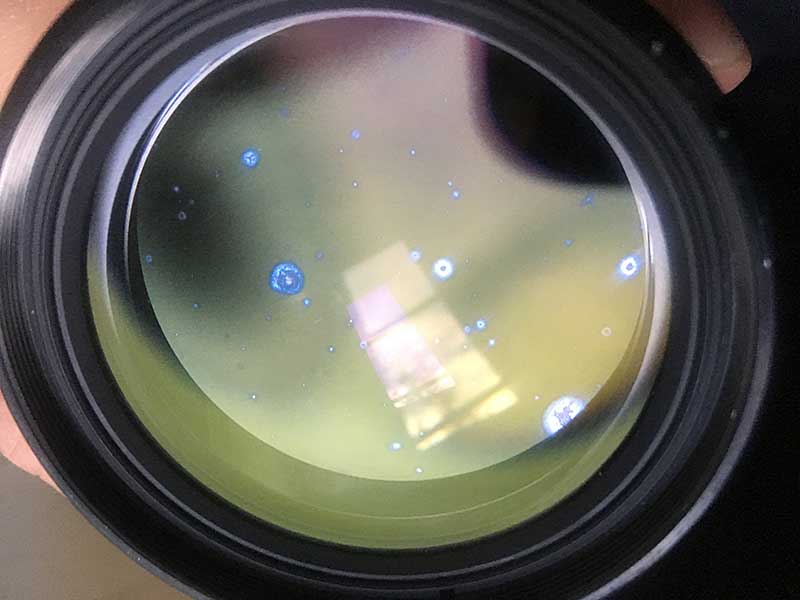
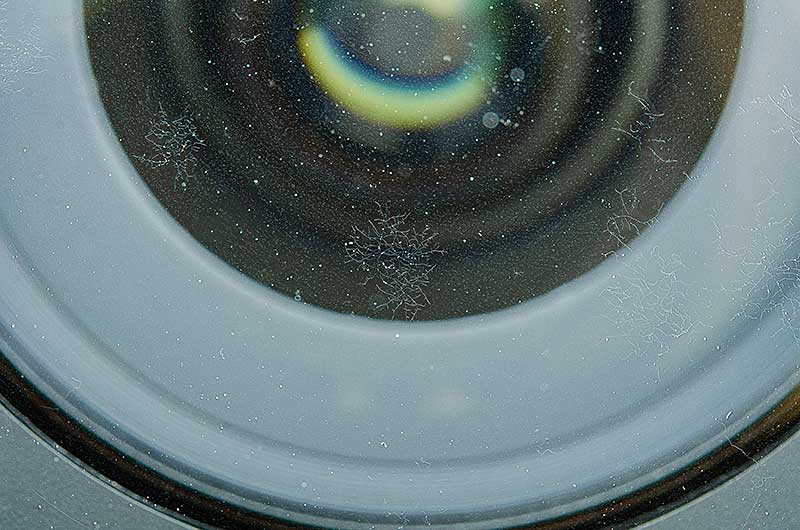
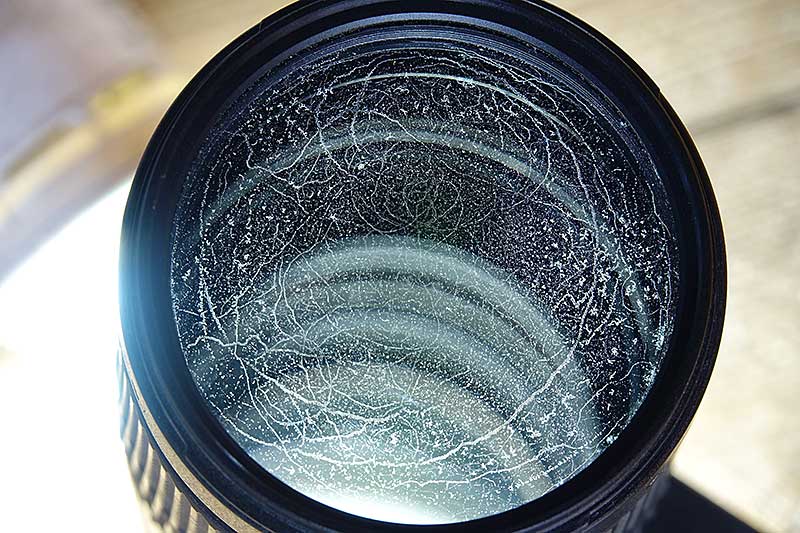
Haze, dust, fog and balsam deposits, scratches and cleaning marks on lenses
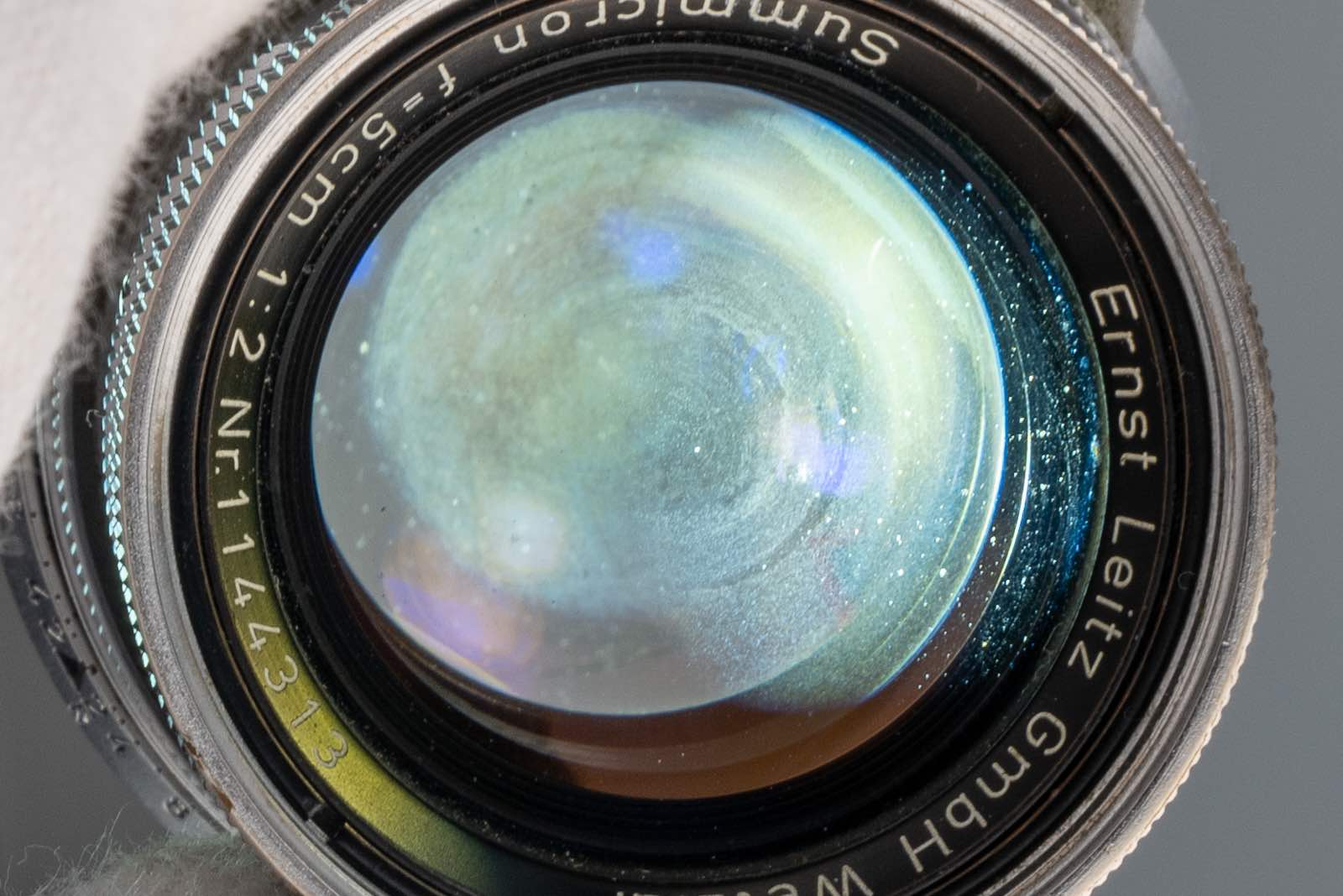
The lens system shows a clear, flat opacity on at least one inner lens, with the help of light and a magnifying glass recognizable. A lower-contrast image result is to be expected.
The older a lens is, the more noticeable dust, haze, fog and balsam deposits in the lens system will be. With increasing severity, effects on the image quality also become apparent under certain recording conditions such as strong backlight. If the inner lens is milky due to balsam deposition* - as shown in the picture of the Leica lens from 1954 above - there will certainly be a loss of contrast when taking the picture.
But such severely impaired lenses are the exception and as long as powerful light sources such as LEDs with the help of magnifying glasses do not first make the abnormalities visible, the results of the recordings will not be impaired.
Dust inclusions, aperture abrasion
During the manufacture of a lens, the room air in which it is mounted is enclosed inside and with it everything that is in this air. For example dust. Modern clean-air technology nowadays enables a largely dust-free production environment and the quality requirements of the manufacturers also increase the expectations of a clean lens system.
But no lens, even if it comes brand new from the sealed packaging, is free of Be dust inclusions. It is much more important that these dust inclusions play no role at all, they have no influence on the image quality, especially if you shoot with an open aperture.
With older lenses, aperture wear occurs, which also settles as the smallest dust particles in the lens system.
Balsam separation describes the fact that the bonding (cementing) of the inner lenses of a lens loosens over the years and the lens system becomes cloudy. Unfavorable storage conditions such as frequent changes of heat and cold - such as storage in the attic - affect the dissolution of the cement. Modern lenses use other ways to connect lens glasses, these adhesives will probably not show this decomposition process in the future.
Scratches, micro-scratches and cleaning marks are unavoidable over time. Because even heavily scratched front lenses will not have any significant effect on the image result, lenses with scratches are usually a pleasant bargain for price-conscious buyers, while scratches on the rear lens of a lens have an unfavorable effect on the picture and are not tolerable for discerning customers.


